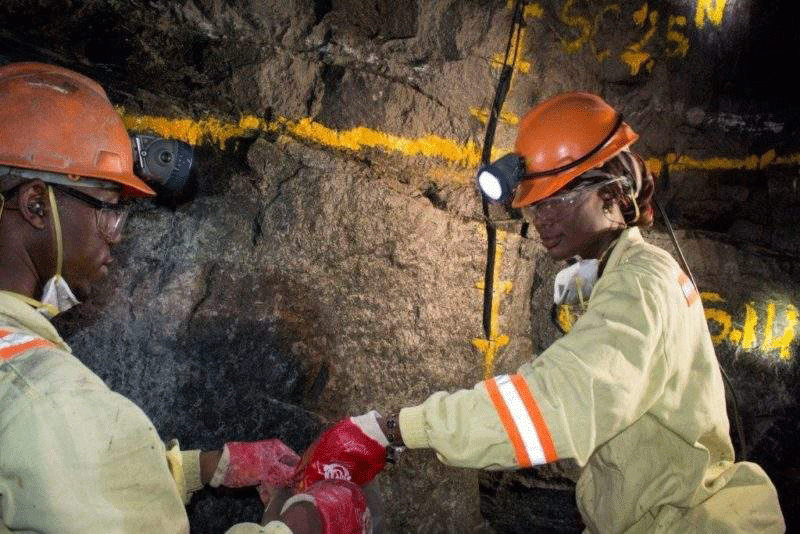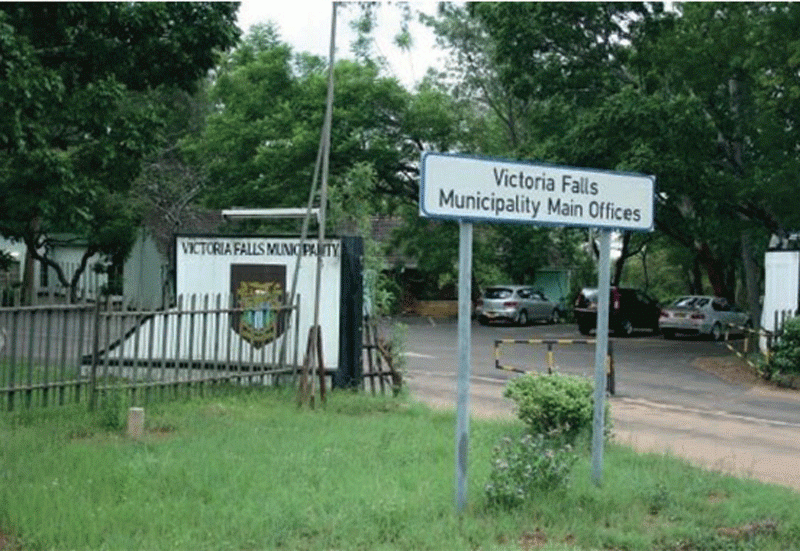
AFTER years of debates and uncertainty, government finally gazetted the Mines and Minerals Bill in February 2023 to ostensibly replace the current Mines and Minerals Act [Chapter 21:05]. The current Act is a1961 legislation, and predates generations. There is no doubt that the mines law required massive review in order to modernise it.
It had fallen out of favour with several contemporary principles and standards that have emerged in mineral resource governance in the last five decades.
Small scale miners opined that it favoured the big corporations and criminalised their sector. Indeed, the current law was not crafted with small scale mining or artisanal mining in mind; it was adopted to regulate formal large-scale mining and criminalise everything else.
This is just one of several aspects that the Bill had to confront. But there is more good news in the Bill. As a law made by man, and not angels, it has its bad parts and even the ugly pieces.
I will briefly comment on these issues.
To begin with, the Bill reserves the ownership of all minerals and the right to search, mine and dispose minerals to the President. Of course, the President does not own the minerals in his/her personal capacity, but as a custodian on behalf of the State. The President grants licences and other rights to mining to companies and other persons through leases, grants and certificates. This provision is retained from the current Act. Over the last 50 years, this provision has been interpreted to grant mining rights a superior status to other land use rights.
There is some logic to this reasoning — if the President has “the right to mine” notwithstanding other land use rights, there is a strong argument that mining takes precedence to other activities, or to other rights exercisable on the same land or soil.
Alive to the possible risks in this interpretation, President Emmerson Mnangagwa had refused to sign an earlier version of the Mines Bill in 2018. There was need to strike a balance between different land uses such as agriculture, otherwise the gains of the land reform programme would be lost. The current Bill seemed to take heed and introduced several mechanisms, measures and procedures to attempt to balance mining and other land-uses.
- Mr President, you missed the opportunity to be the veritable voice of conscience
- ED to commission new-look border post
- Zanu PF ready for congress
- EU slams Zim over delayed reforms
Keep Reading
However, in my view, the miner has stronger rights. All other land uses, including agriculture, fall and bow to the wish and power of the miner. More creativity is possible in all the mechanisms suggested in the Bill. More consultation with the Lands and Agriculture minister must be done, otherwise it is this sector that is deeply imperilled.
For investment, the content of rights and entitlements that come with mining title is good enough. Most mining rights are transferable and bankable and there are also really good safeguards against expropriation of mining rights by the State. Effective, fair and transparent judicial remedies exist to aggrieved parties who may want to protest certain decisions.
The administrative court is situated at the centre of the formal dispute resolution system, but the formal external procedure is secondary to the internal system of remedies that is implemented though the provincial mining director, the Mines secretary, mining affairs board or the minister himself.
This is welcome.
A massive development in the Bill is the classification of certain minerals as “strategic minerals”. This is a class of minerals that are regarded as critical for certain purposes such as national economic development or the social, industrial or security interests of the country.
In the Bill, strategic minerals include natural gas, diamonds, coal, nickel, lithium, oil and copper. Gold is not there; neither is platinum. The extraction of these minerals is closely and differently regulated, and the relevant licenses are special mining leases or special grants. To extract the minerals, a mining company must demonstrate that it is willing to invest US$100 million, and it must create a special purpose vehicle where the State has defined shareholding. The provisions on this are not clear, and it is advised that the minister is given power to make regulations in this issue. More clarity is required.
However, the extra requirements bring a frown to mining investors, current or prospective.
The Bill does away with the current mining commissioner, and renames this official the “provincial mining director” (PMD). This official is primarily responsible for administering the Mines and Minerals Act at the local level. The PMD is given massive powers, from licensing; administration; adjudication and dispute resolution; liaison with MAB and Minister; compliance enforcement; inspection and monitoring and reporting.
In the interests of administrative efficiency, justice and transparency, the Bill must simply create a provincial mining directorate with skilled personnel and experts in geology, prospecting, staking, mining, land-use planning; surveying, law, accountancy or governance. The directorate must report to the secretary. In fact, the massive responsibilities of the PMD suggest that this was government’s intention. However, the Bill forgets to comprehensively deal with this issue. This must be addressed.
For transparency, effective licensing accountability and good information management, the Bill introduces what is called the Mining Cadastre Registration system. It is a digital system for registration and recording of all information on mining titles. This digital mining title system will ensure uniformity and simplicity of mining titles. By digitisation of mining claims, licenses and rights, the mining registration system can easily combat corrupt and fraudulent activities; whilst also confronting the scourge of double-allocation; back-dating of registration of claims and other forms of criminality. This is very welcome, and government has already carried out some pilot tests. However, there is hesitancy in full-blown implementation, and despite the reality that this innovation will ruffle big and powerful feathers, it is a necessary methodology to combat corruption and wealth accumulation in the mining sector.
Of mining titles in the proposed law, the mining lease is given preference. The Bill seeks to provide for mining title to be granted in the form of a mining lease, where the title extends over four or more contiguous blocks. There is general preference of the mining lease, and this is divided into ordinary and special mining leases. Of these two classes of mining leases, the special mining lease is closely regulated, and there are specific provisions that guide the content of special mining leases, that are essentially mining agreements between the government and the investor. This is welcome; section 315 of the Constitution calls for mines law to regulate negotiation and performance of mining contracts. The provisions on the special mining leases go some way in covering contract negotiation, but must be strengthened to also address contract performance monitoring.
A major contentious issue in the current law is the “pay it or lose it policy” which was criticised as not adequately promoting optimal development of mineral resources. Commentators called for a strict ‘use it or lose it policy’ to replace the current policy.
In essence, the pay it or lose it policy enabled holders of mining claims to pay an annual inspection fee and thus preserve their mining title. What does the Bill do? The Bill does not completely abandon the “pay it or lose it policy”.
It maintains this position by defining “work” as including capital expenditure. Several other requirements are introduced to attempt to compel the holder of mining rights to develop the mineral resources. These include several conditions for renewal of mining rights, inspections; reports and physical inspections.
However, in general, there are several mechanisms that allow holders of mining claims to pay inspection fees to preserve their mining title, instead of automatically losing them.
Another interesting issue in the Bill relates to corporate social responsibility. The old debate is whether to impose legally binding corporate social responsibilities (CSR) to mining companies and do away with/lower tax, or do away with CSR in favour of higher taxes. It is not in order to create a legally binding framework for CSR and maintain a high tax regime – the State has the duty to use taxes for development, not mining companies. If the State requires to assign this duty to private mining investors, it must drastically reduce its tax on these companies. What does the Bill propose?
It provides for very loose, unclear and less binding framework for CSR with non-governmental organisations (NGOs) responsible for granting CSR certificates to compliant companies. There are several things wrong with this direction– granting NGOs a statutory public duty is not logical. NGOs are private bodies, funded by donors, and undertake programming as instructions from their donors. NGOs are not independent; and there is no framework to compel them to apply donor funds to undertake responsibilities in the Mines Bill. They do not report to any agency in the Mines Bill; there are no provisions to penalise them for misconduct, or to determine their objectivity. It is advised that local authorities be responsible for the certification, working with community-based organisations that may be established with the assistance of NGOs.
A big headache in the current Act is the miner-farmer conflict. In essence, this conflict arises where a miner has a license to mine where agricultural activities are taking place. In reality, this conflict arises where any other land-use exists on land where mining claims have been pegged. The Bill has mechanisms to address this, but these are furthest from being satisfactory. The drafters had no solution at balancing the rights of the miner with those of the other land user. The provisions strongly favour the miner. For instance, the miner can approach the courts to compel the landholder to sell his/her land to the miner. The Bill requires that there must be compelling and weighty reasons why a landholder can stop mining activities. There is no provision for an effective consultative process with the Ministry of Lands and Agriculture. Further, the Administrative Court is called upon to determine the price of the land if the parties cannot agree on the pricing. There is virtually no strong mechanism for the farmer or other land user to stand his/her ground and refuse to budge.
It is advised that a mechanism that takes into account the nature of the land-use and its importance to livelihoods; to national economic interests and to local communities.
Finally, a comprehensive compensation framework for relocations, or resettlement of land-users must be created in the Bill. Currently, the provisions on compensation are neither adequate nor satisfactory. The same can be said on provisions on community consultations; the representations of communities have little to no value, and in some instances, the decision of communities is ignored and the decision of the local authority is preferred. With massive corruption of local authorities, and their exposure to politics and local economies of scale, there is little doubt that communities will feel hard done by, especially those in communal land that is owned by the President.
In the Bill, their communal land rights are kept as weak as ever, and the voice of the community is not given any value.
The Bill introduces a framework for hypothecation of mining rights (use as collateral) by miners who have taken loans from the State. This means that mining rights are bankable, commercially competitive and important in the commercial sector. This enhances the robustness of the sector and its relevance in economic investment.
Again, this is a very welcome position.
All in all, these positions must be considered in the public hearings currently underway, and in the process of debating and refining the Bill that will take place in Parliament.
- James Tsabora is a governance expert and natural resource consultant and you may contact him on jbtsaborah@gmail.com










